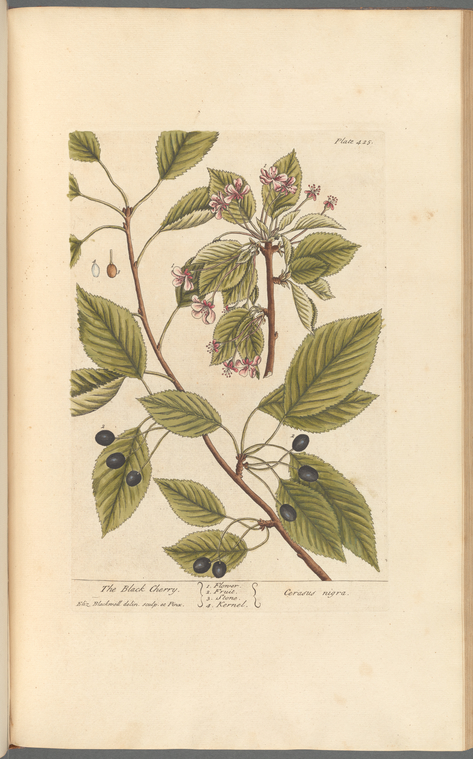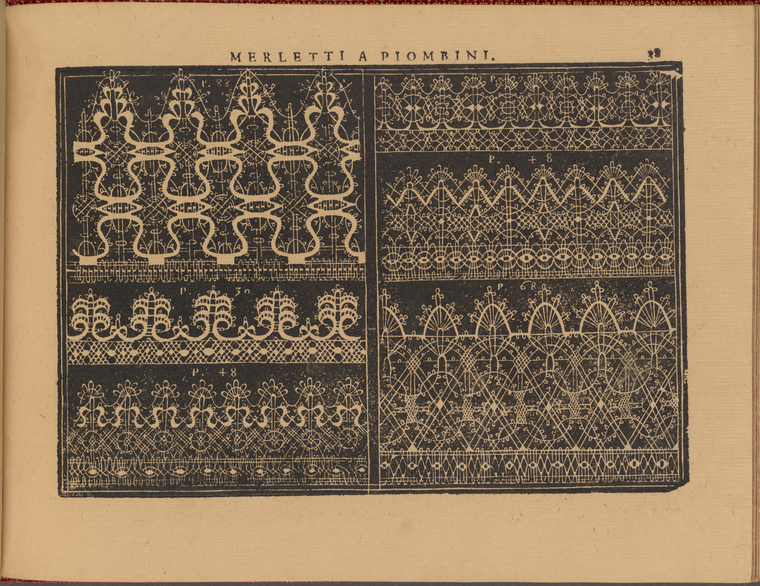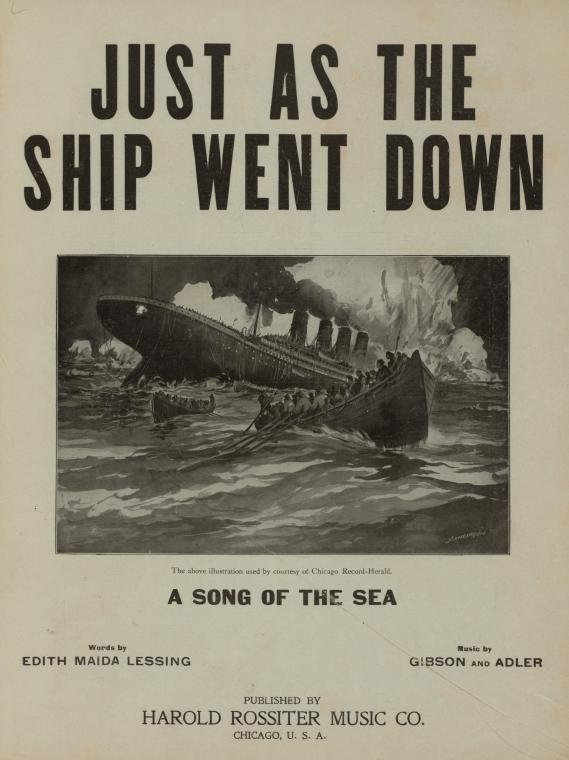Art and Artists Book Club: Exploring Rebecca Solnit's River of Shadows
by Chantal Lee, Librarian, Wallach Division, Stephen A. Schwarzman Building
November 18, 2020
Readers joined us for this discussion on Zoom from Brooklyn, Manhattan, Queens, the Bronx; upstate in New Paltz; a patio in Santa Fe; a campground in California; a living room in Hawaii; and from more distant time zones of Sicily and Mumbai.
How to Achieve Spiritual Perfection in 30 Easy Steps
by Kathie Coblentz, Rare Materials Cataloger, Spencer Collection, Stephen A. Schwarzman Building
May 8, 2020
'The Holy Ladder'—you could call it one of the first self-help books ever written.
In the Weeds: The History of Botanical Illustration and the Work of Anna Atkins
by Emily Walz
February 20, 2019
From painstaking hand-drawn illustrations to actually adding dried plant specimens to works, bringing botanical studies to life had been challenging for centuries. Discover the different processes, and how they led to Anna Atkins's groundbreaking work, "Photographs of British Algae."
The Ghost Library of the Château de La Roche-Guyon
by Kathie Coblentz, Rare Materials Cataloger, Spencer Collection, Stephen A. Schwarzman Building
October 31, 2018
Learn about the French castle with an entire library of "ghosts" and its connection to The New York Public Library's Spencer Collection.
A Banned Book in the Spencer Collection
by Kathie Coblentz, Rare Materials Cataloger, Spencer Collection, Stephen A. Schwarzman Building
September 27, 2017
Banned Books Week 2017 is this week (September 24th–30th). With that in mind, I would like to introduce a beautiful book, once banned, now residing in the Library’s Spencer Collection. It is a work of no particular bibliographical significance: an isolated volume (volume 2, the correspondence) from a ten-volume set of the works of St. Augustine.
The Natural History of Early Modern Needlework
by Madeleine Viljoen, Curator, Wallach Division, Stephen A. Schwarzman Building
September 28, 2015
From the sixteenth century on, men -- rather than women -- developed pattern books on which women based their needlepoint work. This blog explores the works of two late sixteenth and seventeenth-century women, Isabella Parasole and Maria Sibylla Merian, who overthrew these conventions, first by creating textile patterns for women and then by branching out into the study of natural history, a field that was dominated by male explorers and discoverers.
Strasbourg's Most Splendid Party
by Kathie Coblentz, Rare Materials Cataloger, Spencer Collection, Stephen A. Schwarzman Building
April 14, 2015
On October 5, 1744, the city of Strasbourg threw a party that would last through the five following days. There were processions, ceremonies, arches of triumph, costumed children, music, dancing, banquets, fireworks, jousting, water games, allegorical figures, decorated barges, and pageantry of all sorts. It was a most splendid party.
Vegetable Drolleries
by Kathie Coblentz, Rare Materials Cataloger, Spencer Collection, Stephen A. Schwarzman Building
February 14, 2013
Revolt at the Salad BarHave you seen the Library's long-running exhibition "Lunch Hour" yet? If not, this is your last chance, for it closes on Sunday, February 17. To whet your appetite, I'd like to present a delightful volume that was recently added to the Spencer Collection.
The work is Drôleries végétales (Vegetable Drolleries), also known as L'Empire des
Spencer Collection Book of the Month: The Rain of Crosses
by Kathie Coblentz, Rare Materials Cataloger, Spencer Collection, Stephen A. Schwarzman Building
April 29, 2011
Did you know that The New York Public Library has an official color? I didn't either, and I've worked here since the Dark Ages (before the Internet). But we do, as I found out when I ordered new business cards recently. The color is red.
That's fine with me—I've always liked red (political considerations aside), and besides it gives me an excuse to select as the Spencer Collection Book of the Month for April a small volume containing two illustrations in vivid red. It is appropriate also because Easter falls in April this year.
The work is
Postscript to "Kippenberger's Quixote": The Missing Piece
by Kathie Coblentz, Rare Materials Cataloger, Spencer Collection, Stephen A. Schwarzman Building
April 14, 2011
About a week after my most recent post, something extraordinary happened. Regina Fiorito, a representative of the Estate of Martin Kippenberger (represented by the Galerie Gisela Capitain in Cologne) contacted the Library about it. "We would like to be in touch with Kathie Coblentz from the Spencer Collection, we read her blog today about a Kippenberger book. We (The Estate of Martin Kippenberger) were thrilled and have a missing piece of information for her."
Spencer Collection Book of the Month: Kippenberger's Quixote
by Kathie Coblentz, Rare Materials Cataloger, Spencer Collection, Stephen A. Schwarzman Building
March 18, 2011
Kippenberger's Don Quijote de la Mancha book object (detail)When is a book not a book? For this month's Spencer Collection Book of the Month, I have a couple of answers in mind.
From the point of view of contemporary art, the answer might be, "When it's a book object."—"Art which makes use of the book format or the structure of the book; typically ... unique sculptural works that take the form of, or incorporate,
Spencer Collection Book of the Month: A Wotton Binding
by Kathie Coblentz, Rare Materials Cataloger, Spencer Collection, Stephen A. Schwarzman Building
February 14, 2011
Volume bound for Thomas Wotton (Detail)After I'd spent four Sunday evenings in January engrossed in the doings of the Earl of Grantham and his household on the PBS "Masterpiece Classic" series Downton Abbey, this month's choice for Spencer Collection Book of the Month was obvious: a book that lingered for more than three centuries in the company of barons and earls, before being exiled from their presence in exchange for cold, hard cash.
Like
Spencer Collection Book of the Month: Correspondence of St. Jerome
by Kathie Coblentz, Rare Materials Cataloger, Spencer Collection, Stephen A. Schwarzman Building
January 10, 2011
When I started blogging last May, I hoped to post frequently, but my "day job" of cataloging the books I'd like to write about kept getting in the way. This year, I made a New Year's resolution to blog more regularly. To get started, I thought I would pick a "Spencer Collection Book of the Month" at the beginning of each month and write a short post about it—just enough to share with my readers some of the things that make it special, because the
Movable books in the Spencer Collection
by Kathie Coblentz, Rare Materials Cataloger, Spencer Collection, Stephen A. Schwarzman Building
June 23, 2010
Books with movable flaps, pop-up pages, and other "interactive" features are known to librarians as "Toy and movable books" and more than a thousand examples can be found in the Library's catalog. Most are modern children's books, but the genre has a surprisingly long history, pre-dating even the dawn of printing, and most early examples were
A Passenger to Remember: Introducing the Spencer Collection
by Kathie Coblentz, Rare Materials Cataloger, Spencer Collection, Stephen A. Schwarzman Building
June 4, 2010
"A collection ... of the finest illustrated books that can be procured, of any country and in any language ... bound in handsome bindings representing the work of the most noted book-binders of all countries..."
* * *
The Titanic disaster portrayed on a
contemporary songsheet coverSometime in 1910, according to an often-repeated story that has acquired the status of legend, William Augustus Spencer visited the new central building of the New York Public Library, still
 With your library card, it's easier than ever to choose from more than 300,000 e-books on SimplyE, The New York Public Library's free e-reader app. Gain access to digital resources for all ages, including e-books, audiobooks, databases, and more.
With your library card, it's easier than ever to choose from more than 300,000 e-books on SimplyE, The New York Public Library's free e-reader app. Gain access to digital resources for all ages, including e-books, audiobooks, databases, and more.




















